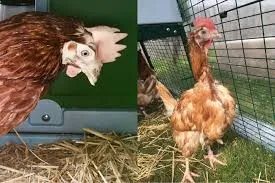Innovative Solutions for Modern Poultry Cages Enhancing Bird Welfare and Farm Efficiency
Aug . 13, 2024 19:54 Back to list
Innovative Solutions for Modern Poultry Cages Enhancing Bird Welfare and Farm Efficiency
The Importance of Poultry Cages in Modern Farming
In the ever-evolving landscape of agriculture, poultry farming has seen significant advancements, particularly in the methods of raising birds. One of the most critical elements in this evolution is the use of poultry cages. These structures have transformed the way poultry are raised, ensuring not just the efficiency of production but also the welfare of the birds.
Poultry cages come in various designs, tailored to accommodate different species of birds such as chickens, ducks, and turkeys. The most common type, however, is the layer cage system, primarily used for egg-laying hens. These cages are designed to maximize space efficiency and allow more birds to be housed per square foot. By utilizing vertical space and modular designs, modern poultry cages enable farmers to produce higher yields without the need for expansive land.
One of the standout benefits of poultry cages is the enhanced biosecurity they provide
. By confining birds in controlled environments, the risk of diseases spreading among flocks is significantly reduced. This is particularly important in an age where avian diseases can lead to catastrophic losses for farmers. Caged systems restrict the movement of birds, making it easier to monitor their health and implement interventions when necessary. Regular cleaning and management of these cages further support a healthier environment, reducing stress and disease risks.Moreover, poultry cages facilitate economic efficiency. The controlled setting allows for better management of feeding and watering systems, which can be automated to ensure that each bird receives optimal nourishment. This not only leads to better growth rates and productivity but also reduces waste, as feed can be efficiently delivered and consumed. The result is a more sustainable operation that can meet the demands of a growing population while minimizing environmental impact.
poultry cage

The welfare of the hens is often a focal point of discussions surrounding poultry cages. Critics argue that confinement can lead to stress and prevent natural behaviors, such as nesting and foraging. However, advancements in cage design have led to enriched environments that allow hens to express some of these natural behaviors. For instance, modern cages often include features such as perches, dust baths, and nesting areas that contribute to the birds’ well-being. Furthermore, regulatory bodies are increasingly mandating higher welfare standards, leading many producers to adopt separate systems that prioritize both productivity and animal welfare.
In addition to welfare considerations, the implementation of poultry cages has notable advantages in terms of resource management. By consolidating birds in a confined space, farmers can use resources like water and feed more effectively. Furthermore, poultry farms configured with cage systems can reduce their overall carbon footprint, as the production process becomes more streamlined and resource-efficient.
Looking ahead, the poultry industry continues to innovate, with technologies enhancing cage designs and farming practices. From smart monitoring systems that track bird health to automated feeding systems that reduce labor costs, the future of poultry farming is bright. However, as we move forward, it is essential to balance productivity with animal welfare, ensuring that our methods of farming meet both economic demands and ethical considerations.
In conclusion, poultry cages play a pivotal role in modern poultry farming, offering a myriad of benefits that range from enhanced biosecurity to improved resource efficiency. While challenges regarding animal welfare persist, advancements in cage designs and management practices are helping to alleviate these concerns. As we strive for a sustainable future in agriculture, poultry cages will undoubtedly remain a cornerstone of effective poultry production.
-
Hot Sale 24 & 18 Door Rabbit Cages - Premium Breeding Solutions
NewsJul.25,2025
-
Automatic Feeding Line System Pan Feeder Nipple Drinker - Anping County Yize Metal Products Co., Ltd.
NewsJul.21,2025
-
Automatic Feeding Line System Pan Feeder Nipple Drinker - Anping County Yize Metal Products Co., Ltd.
NewsJul.21,2025
-
Automatic Feeding Line System - Anping Yize | Precision & Nipple
NewsJul.21,2025
-
Automatic Feeding Line System - Anping Yize | Precision & Nipple
NewsJul.21,2025
-
Automatic Feeding Line System-Anping County Yize Metal Products Co., Ltd.|Efficient Feed Distribution&Customized Animal Farming Solutions
NewsJul.21,2025






